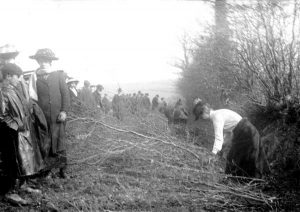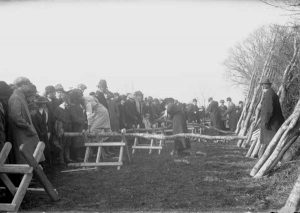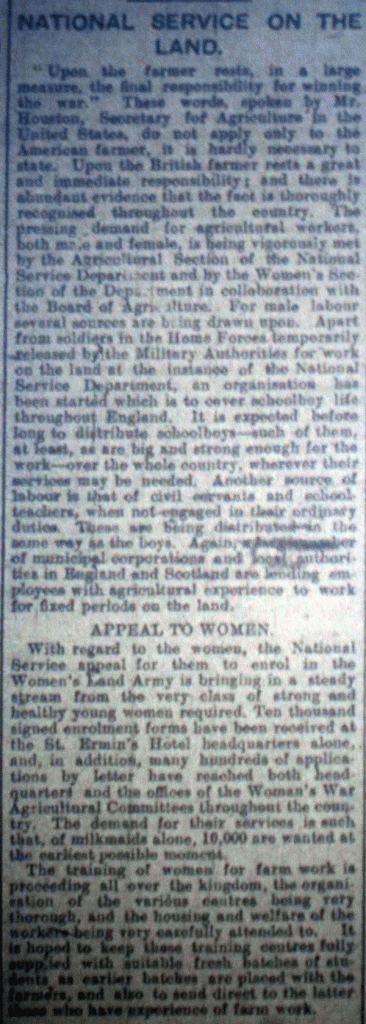.
as collected by Jim Edwards, Launceston, 1988-2011.
This is the story behind the formation of the Women’s Volunteer Force, which became the Women’s Land Army.
Mary Francis Vivian Lobb being a strong advocate for women to help out in agriculture, was keen to show that women could take their place and help the countries growing need to produce more of its food, especially with the drain on man power to the war. Lady Molesworth St Aubyn was another tireless campaigner and as early as 1916 she proposed to organised exhibitions that would show the aid women could provide to the home front. Things were coming to a head with the passing of the Military Service Act in January 1916. This imposed conscription for the first time on single men aged 18 to 41 who were outside of a protected occupation. Although agriculture was one of the protected occupations, this did not stop the taking away of key agricultural workers who would face stern challenges before respective Tribunals. Thus the requirement for extra hands was in dire need.
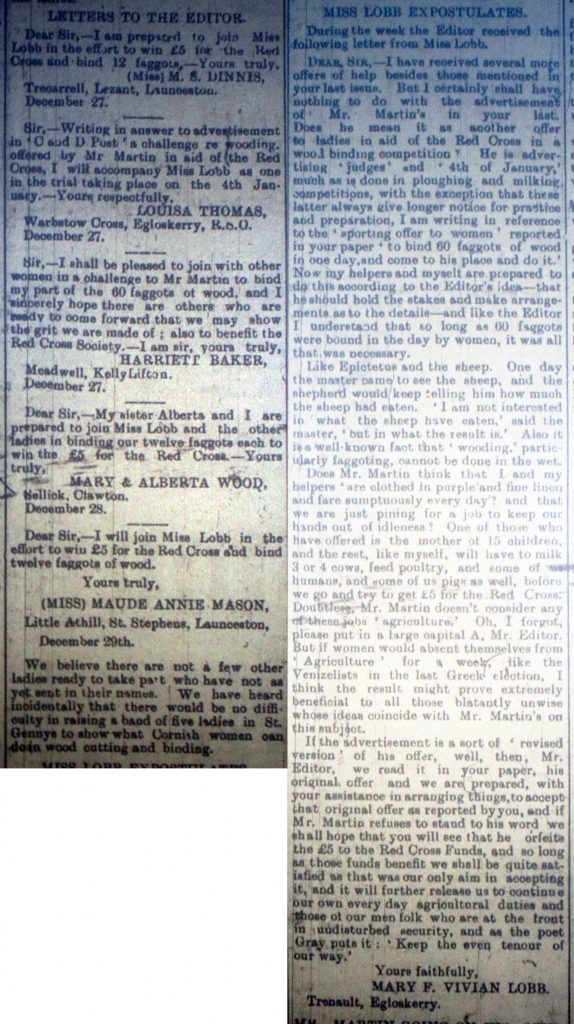



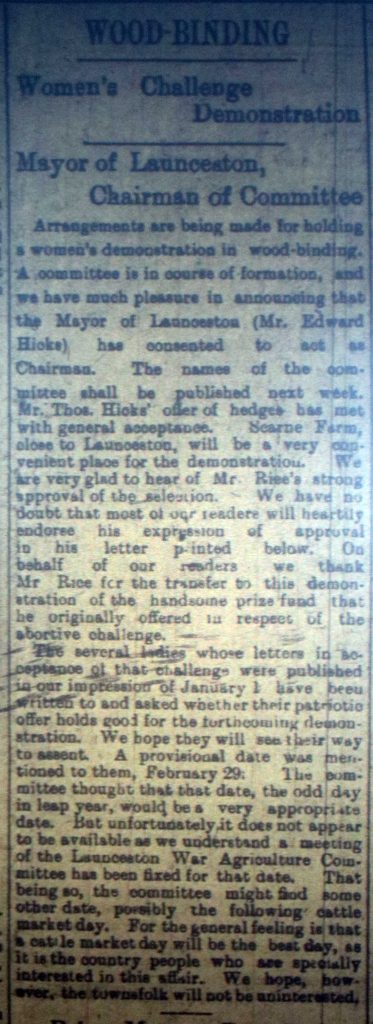

At the Launceston, Camelford, and Stratton District War Agriculture Committee meeting held on Tuesday, January 25th, 1916, the recent survey of parishes where women were willing to work on the land showed a surprising number that had put themselves forward. However, there was some dissenting voices. At the Chemical Co. annual manure audit held at Homelands, Lezant, Mr Dymond of Stoke Climsland, said he thought the ladies could do more good in looking after the household. “It was not what a man got, but what a woman saved, that made the difference” he said. “How could they keep the house going and be out on the land?” he asked. In the discussion which followed it became quite evident that the majority of farmers present were not in favour of employing woman on farms.

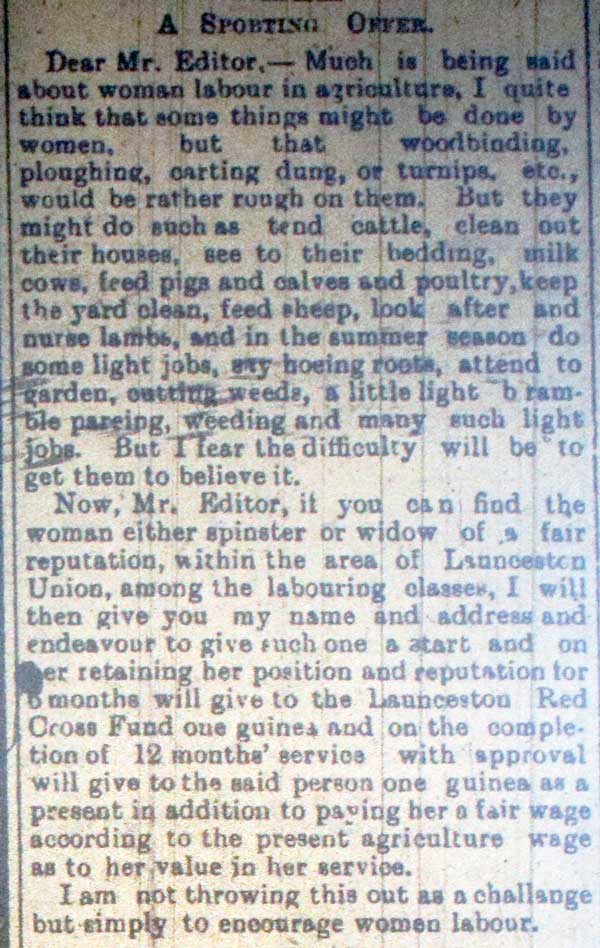



THE FIRST STAGES OF THE WOMEN’S LAND ARMY.
Scarne Farm, at the southern end of Hurdon Way estate, is described as one of the oldest farms in the district.
The family of Hicks farmed it for about a century before Mr Cecil Hicks, son of Mr Thomas Hicks of St Gennys, retired. During Mr Thomas Hicks’ ownership, in late 1915 and early 1916, due to the loss of lives in the Great War and the Government’s idea that farm labourers were expendable, most farms were so short of manpower they could no longer be properly farmed. It was suggested that Postmen be used, but it was pointed out that most of the remaining postal workers were too old for soldiering; requests were to be made to the government for the release of farm workers from the Army to help feed the near starving population, but these were far too important to the Army. Next it was suggested, at a meeting of the Launceston District War Agricultural Committee meeting, held in the town in December 1915, that women be used as farm labourers, but the idea was scoffed at, and it was said by some (men) that women were too weak in the head and in the body, and other derogatory remarks were made, and the idea was apparently dropped.
A letter appeared in the Cornish & Devon Post, written by a woman, which stated that women could easily do the job – if not in the same time, they could still accomplish everything a man could do. Wagers were made, land was offered for women to prove themselves, arguments arose. Finally Mr Hicks offered some of his land for a series of competitions to be held upon to settle the argument that women could, or not, do the work. Women did do the jobs set for them, many of them more quickly and efficiently than the men had been doing, and from then onwards many more such competitions were held in the South-West, the women proving their worth many times over. With the organisation of Lady Molesworth St Aubyn, an exhibition showing the aid women could provide to the home front, took place at Thomas Hicks’s farm at Scarne Farm on March 9th, 1916. Those that took part are: Mary Francis Vivian Lobb, Treguddick, South Petherwin: May Billing, Exwell, Linkinhorne: Miss MS Dinnis, Trecarell: Louisa Thomas, Warbstow Cross: Harriett Baker, Meadwell, Kelly: Mary E & Alberta A Wood, Sellick, Clawton: C Reddicliffe, Hill Cottage, Stowford: Letty Wood, Sea View, Tresmorn, St Gennys: Emma Butler, Tatson, Pyworthy: Mrs Burgoyne, Pendowrie, St Gennys: Mrs Hodge, St Gennys: Mary Bartlett, Tamar Villa, Tavistock Rd: Mrs Jury, Northgate St: Edith Mary Hancock, Newham, Otterham: Emily Gay, Well, North Tamerton: Mary Pearse, Higher Dizzard: Mrs Bailey, Grinnacombe, Broadwood: Mary Skitch, Rosecare: S Webber, Hill Park Cottage, North Tamerton: Mrs Toll, Grinnacombe: Beatrice Evely, Down House, Kelly.
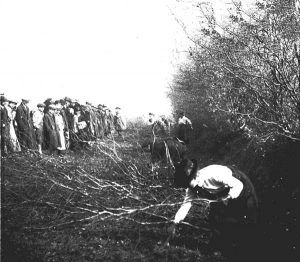
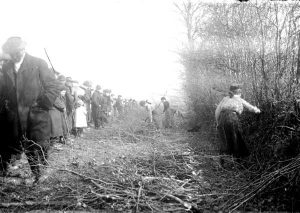
These four images were taken at the 1916 Scarne Farm demonstrations held on Thursday, March 9th, organised to show the skills of female labour and how they could aid the war effort.



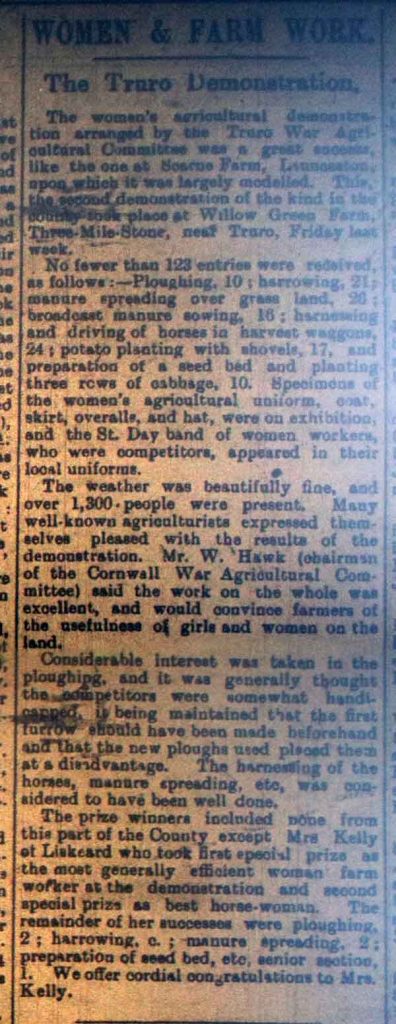

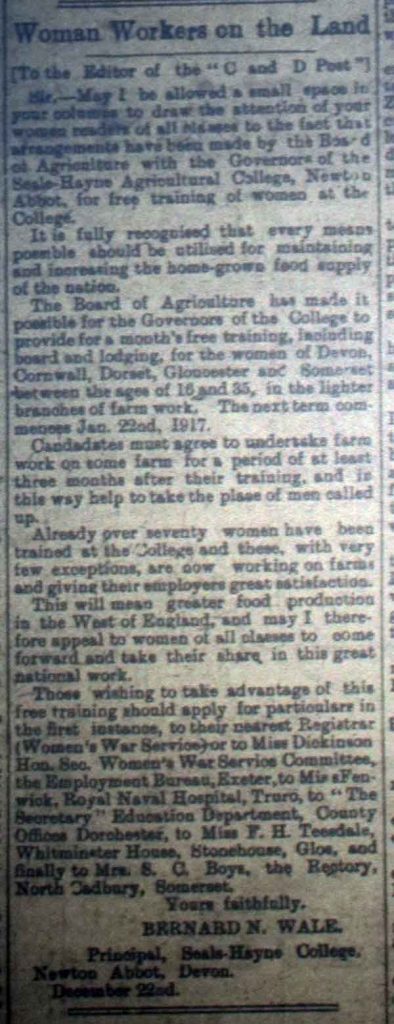


Women at Work April 28th, 1917


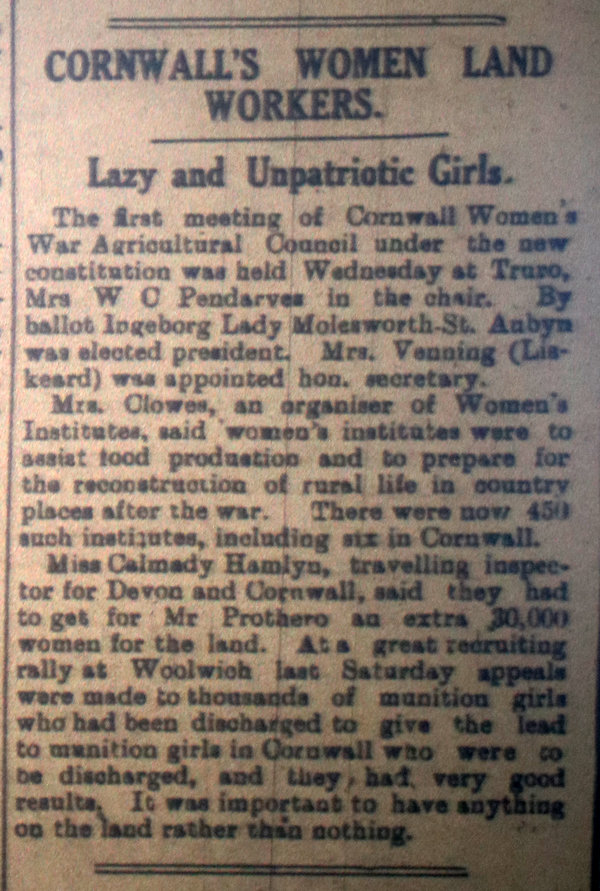
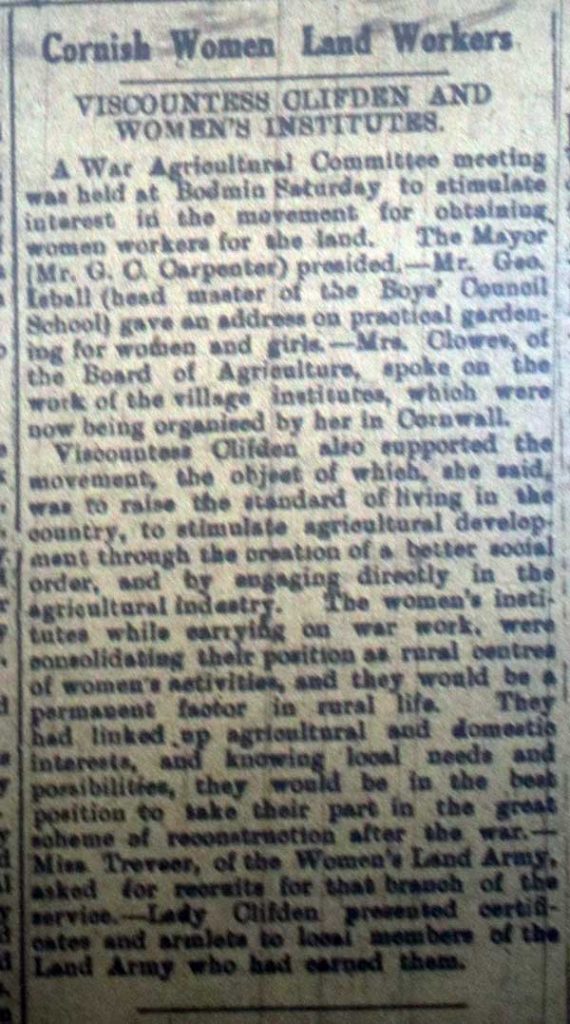
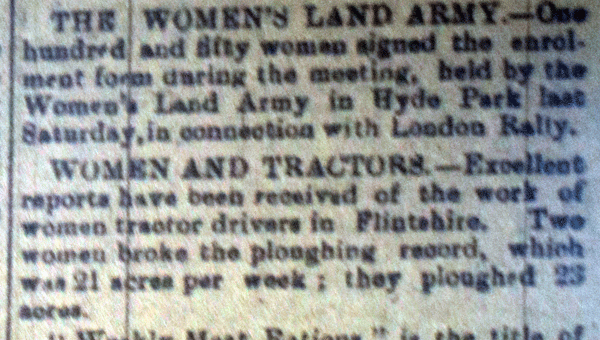
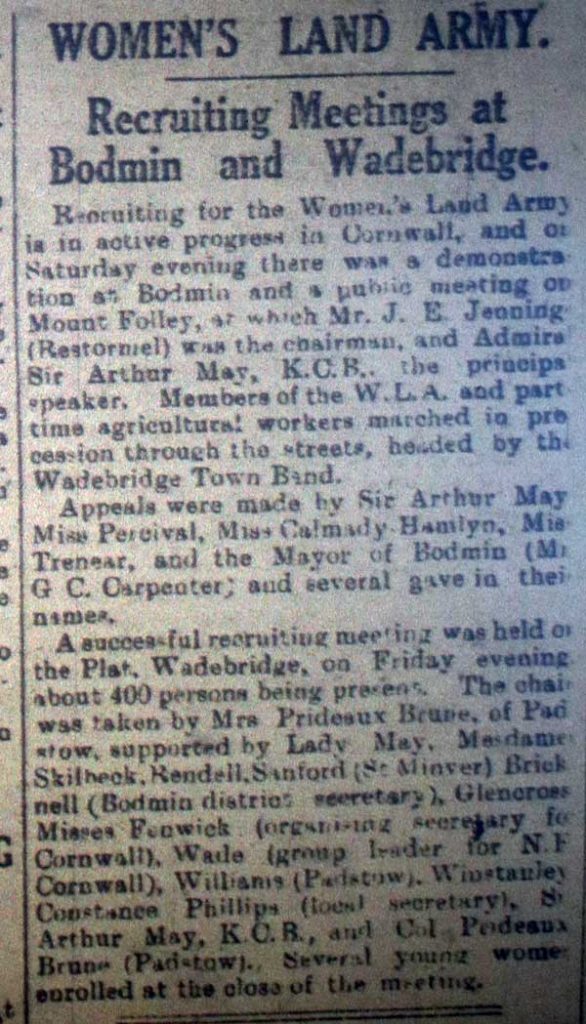
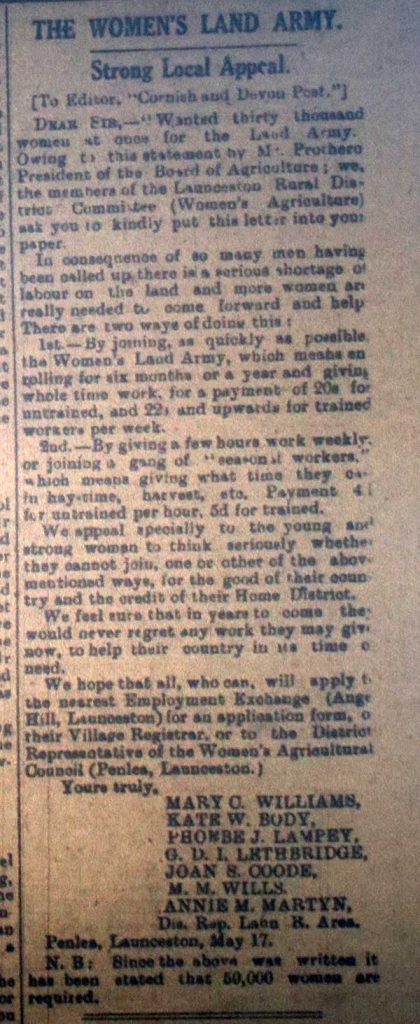

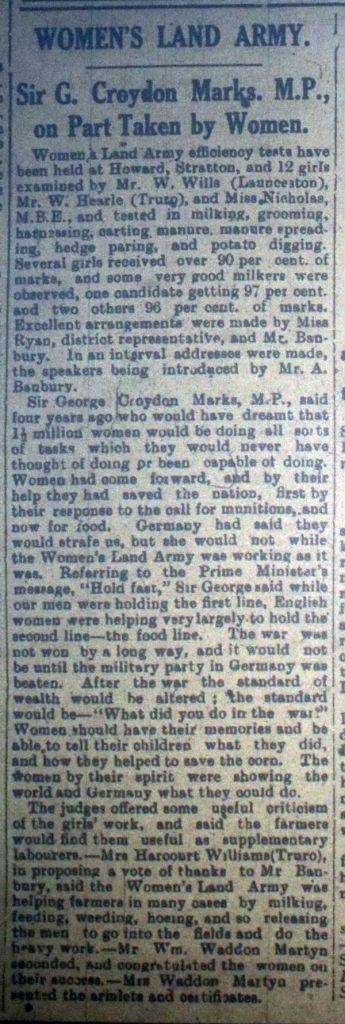
The King’s very own farm at Stoke Climsland was at the fore front of hiring women to fulfill the role left by the men departing to the front.

Visits: 114

